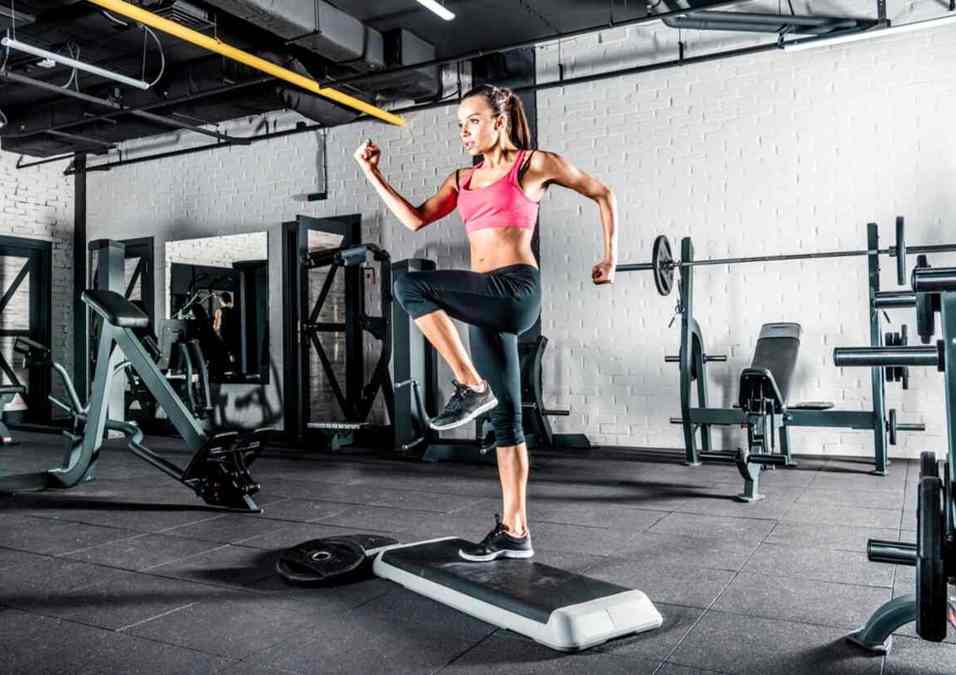Aerobic and Anaerobic Exercises for Fitness

SIGN UP FOR YOUR FREE DAY PASS TODAY!
Everyone can benefit from training that includes both aerobic and anaerobic exercises—but what's the difference between them?
Kaylan Keathley, ISSA Master Trainer and NASM Certified Personal Trainer at Vero Fitness, explains, "Aerobic training improves your ability to use oxygen and burn fatty acids during exercise through what's called the oxidative energy pathway."
Keathley continues, "Aerobic training can enhance your body's oxidative capacity within muscle fibers, boost your aerobic capacity (depending on your genetics), improve fat utilization and mobilization, increase blood flow, and develop your slow-twitch muscle fibers, among other benefits."
In contrast, "anaerobic activities, as the name suggests, do not require oxygen for energy," Keathley explains. The main goal of anaerobic training is to build muscle mass.
Simply put, Keathley says, think of aerobic activities as endurance exercises that raise your breathing rate and last more than two minutes, while anaerobic activities involve short bursts of intense effort.
Examples of Aerobic and Anaerobic Exercises
Aerobic exercises include:
- Running or jogging
- Biking
- Swimming
- Walking
- Hiking
- Rollerblading
- Cardio machines like treadmills and ellipticals
- Stair climbing
- Rowing
- Dancing
- Skiing
- Jumping rope
- Sports like tennis, pickleball, basketball, soccer, hockey, and volleyball
Anaerobic exercises include:
- High-intensity interval training (HIIT)
- Weightlifting
- Calisthenics (e.g., pushups, squats)
- Plyometrics (jump training)
Health Benefits of Both Exercise Types
Aerobic activity dominates exercise guidelines for overall health and fitness.
According to the U.S. Department of Health and Human Services' Physical Activity Guidelines for Americans, adults should aim for at least 150 minutes of moderate-intensity aerobic exercise each week.
Yet, anaerobic exercise also offers unique health benefits, making it a crucial part of a balanced fitness routine.
Medical News Today clarifies that the two types of exercise differ based on how the body uses stored energy, the exercise's intensity, and how long a person can sustain the activity.
Aerobic exercises help increase endurance, while anaerobic exercises help build muscle mass and strength.
Both exercise types strengthen the heart, enhance circulation, boost metabolism, and aid in weight management.
Keathley notes, "The capacity and efficiency of aerobic and anaerobic activities and their physiological benefits are more influenced by your genetics than by age, gender, or current fitness level."
"Understanding your body's specific design can significantly enhance your training potential and results, reducing frustration and confusion."
Specific Benefits of Aerobic and Anaerobic Exercise
Aerobic exercise benefits include:
- Reduced risk of chronic illness: Regular exercise, including aerobics, lowers the risk of cardiovascular diseases like heart disease, stroke, and high blood pressure, as well as chronic diseases like type 2 diabetes and certain cancers.
- Less stress: Engaging in a heart-pumping cardio routine helps lower stress levels.
- Weight management: Consistent physical activity helps maintain a healthy weight.
- Better sleep: Regular exercisers tend to fall asleep faster and enjoy more restful sleep. Research also shows that regular aerobic activity can improve sleep quality for those with insomnia.
Anaerobic exercise benefits include:
- Improved VO2 max: VO2 max measures the maximum amount of oxygen your body uses during intense exercise, indicative of cardiorespiratory fitness. Studies show that HIIT may be more effective at improving VO2 max than moderate, steady-state exercise.
- Shorter workouts: Research suggests that HIIT boosts health in a short amount of time, with studies showing that as little as three 10-minute HIIT sessions per week can improve aerobic capacity and endurance.
- Increased muscle power: Anaerobic exercise helps individuals looking to enhance athletic performance, such as swinging a bat harder or running faster, by increasing muscle power.
Getting Started with a Professional
Keathley advises that if you're just starting out or want to optimize your exercise program, working with a professional can be very beneficial.
A fitness assessment can identify your "weak spots" and guide how your training should be tailored to "bridge the gaps."
"There are countless fantastic exercises, sports, and workout regimes available today. The trick is pairing the right exercises with your body and aligning them with your goals," she says.
About Kaylan Keathley
Kaylan Keathley is an ISSA Master Trainer, NASM Certified Personal Trainer, and executive director of Vero Fitness' IDLife Program.
She has worked full-time as a personal trainer since 2013 and offers DNA-based training, nutrition, and supplementation coaching.
Vero Fitness is located at 1060 6th Ave. You can reach them at 772-567-1400.
Source: veronews
The opinions shared in the GymNation blog articles are solely those of the respective authors and may not represent the perspectives of GymNation or any member of the GymNation team.
GET YOUR FREE TRIAL TODAY

















































































